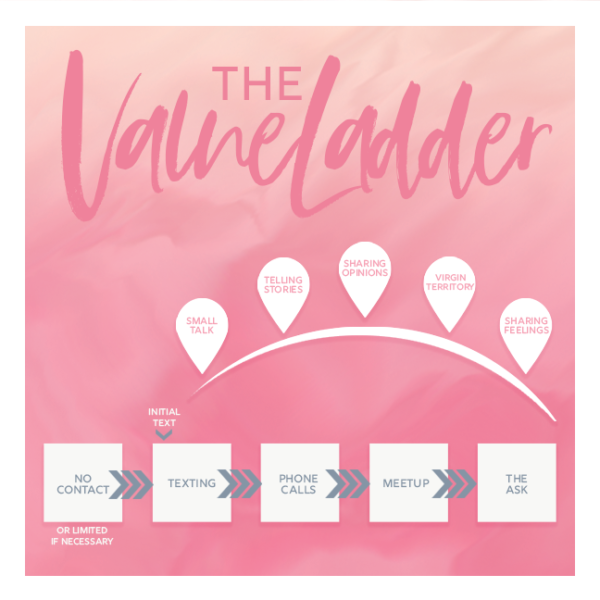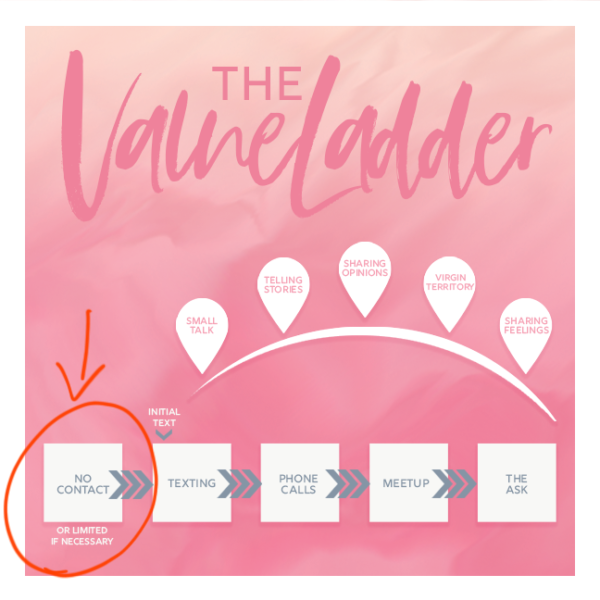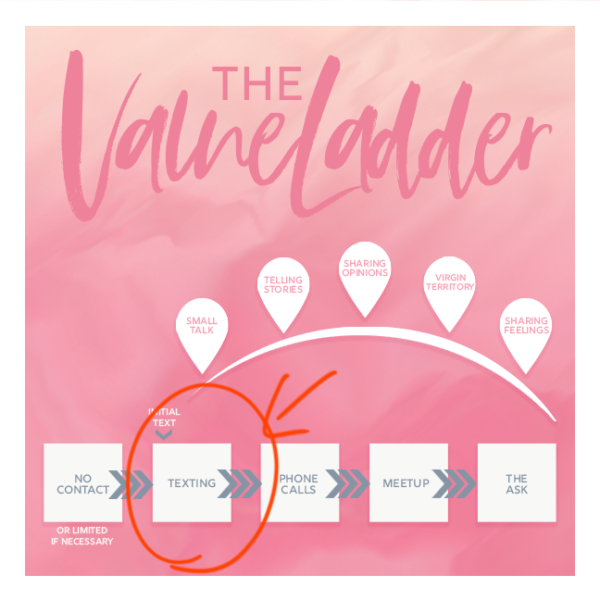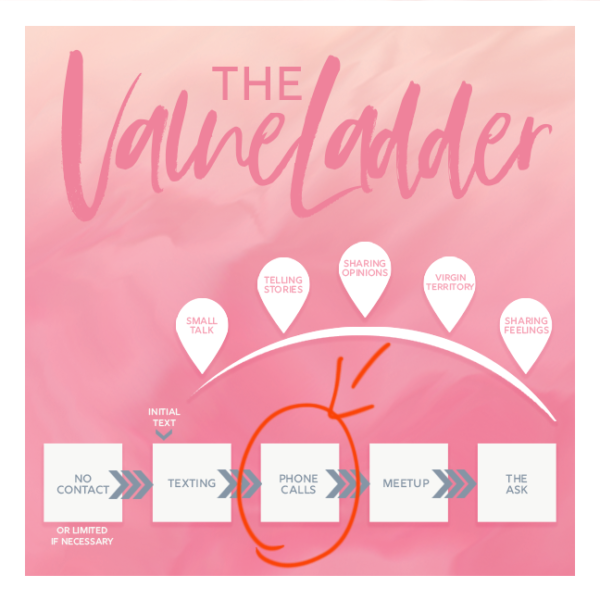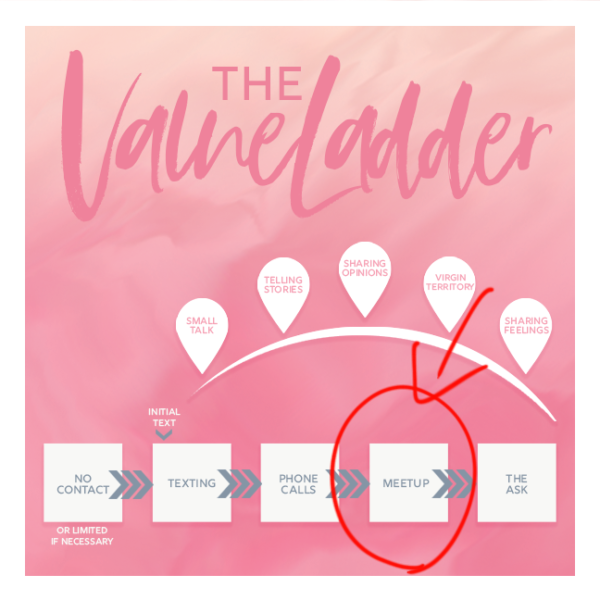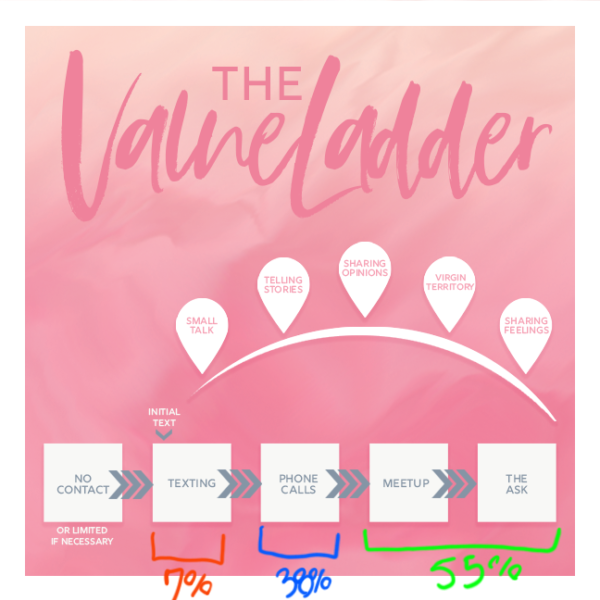The debate has long been raging, is it better to text or call your ex after a breakup?
Well, today we’re going to find out.
In my opinion, the answer is going to depend on if you want them back. If you don’t then your best bet is to enter into either a long period of no contact or an indefinite one. If you do want them back then you’re going to need BOTH texting and calling.
I actually don’t know where this idea came from to pit texting and calling against one another but they actually work better in tandem.
So, in today’s discussion we’re going to talk about,
- Figuring out your overall goal
- The value ladder concept
- The 7/38/55 rule
- How to advance up the ladder
- Big talk vs small talk
Okie doke! Let’s go.

What Are Your Chances of Getting Your Ex Boyfriend Back?
Take the quizTexting And Calling Is Actually Intertwined With Figuring Out Your Overall Goal
So, let’s go back to the original question of this discussion.
Is it better to text or call your ex?
Well, I think it depends on your overall goal.
- Do you want them back?
- Do you want to get over them?
The answers will actually be different for both.
It’s actually better to not contact them at all, if possible, if you don’t want them back. Or, at least, do a couple of months of no contact.
This is actually taken directly from a psychologist that I interviewed named Julia Kristina, who’s a registered clinical counselor in Vancouver, Canada.
I asked her what her thoughts were on the whole approach that I have to breakups. I’d say probably around 90% of the clients that hire me are interested in getting their exes back.
I wanted to get an actual psychologist’s take on what the most healthy approach to breakup recovery was. And here was her response:
“Yeah, I think many of us often entertain the idea of rekindling relationships because the transition into a new phase can be overwhelming for our minds. Let me delve deeper into this. For those who genuinely believe they still love their former partners, consider this: if you’ve been in a long-term relationship, your brain has become accustomed to that presence. You’re familiar with talking to them, seeing them, making plans together, and sharing a life. Suddenly, breakups usually happen quite abruptly. One moment you’re together, and the next, a single conversation can end everything. This abrupt termination can be extremely jarring for our psyche.
Despite being one of the most adaptable species on the planet, humans inherently resist change. We’re often unprepared for new situations, uncertain about what to expect or how to behave. When a relationship ends, it’s not just the emotional bond that’s disrupted but also the habitual routines we’ve built around that relationship. These neural pathways in our brains need time to recalibrate. We might mistakenly believe we want to reunite simply because the unfamiliarity of our new reality is uncomfortable. Sometimes, we mistake our longing for routine and predictability as love.
A common suggestion for those grappling with these feelings is to undergo a period of complete no-contact for a few months. It provides clarity, helping differentiate between genuine feelings and mere attachment to old routines.”
So, as you can see, she really jumps onto this idea of taking some time for yourself. And, for the most part, this is pretty consistent with what we recommend.
We always recommend periods of no contact first after a breakup to try to recalibrate. The difference is she really harped on longer periods of no contact, and in some cases, indefinite no contact. Whereas, we are more in the line of shorter periods of no contact.
So, where she would recommend maybe a 90-day no contact rule, we would recommend a 45-day no contact rule.
But, ultimately, this doesn’t really answer the question that this entire discussion is about. If you do want your ex back, that’s where I think the texting and calling question holds more credence.
So, let’s get one thing out of the way. I think in order to answer what is the better approach to talking or getting an ex back, texting or calling, we need to first understand the value ladder concept.

What Are Your Chances of Getting Your Ex Boyfriend Back?
Take the quizLet’s Do A Deep Dive On The Value Ladder
All right, so the value ladder concept is a concept that I came up with years ago.
Basically, in the context of rebuilding a relationship, it’s a method of mapping out your gestures or actions in a step-by-step sequence where you offer more emotional or relational value at each step. The idea is to gradually rebuild trust and connection. So, you start with basic, low-risk gestures of goodwill and then move to deeper, more meaningful conversations. Initially, you might begin with simple acts of communication or understanding. As trust is reestablished, you progress to actions that demonstrate deeper commitment and intimacy.
Essentially, with the value ladder, there are four main phases to it:
- The no-contact phase. We just talked about this phase. Here, you build value by making your life your own and trying to kick your codependent tendencies to the curb.
- The texting phase. You build value in this phase through texting and creating a meaningful commitment or establishing some sort of rapport.
- The phone call phase. Much like the texting phase, you build value here by having meaningful conversations over the phone.
- The in-person interaction phase. Here, the focus is on building value through in-person interactions.
A lot of this is a rinse and repeat approach. You start by building value in the texting phase, and once enough value has been built, you move on to the phone call phase, and so on.
Eventually, by the time you reach the in-person interaction phase, you’ll be in a position where dating is on the table. Your ex might be more likely to want to reconcile, or you’ll find an opportunity to express the same.
But what the value ladder really answers is the question of whether texting or calling is better.
The real answer is that both are important.
The key insight from the value ladder is that there’s a time and a place for both texting and calling. When you choose to text or call is often more impactful than the actual content of your messages or conversations.
This leads me to introduce something called the 7-38-55 rule.
Incorporating The 7-38-55 Rule
Now, the 7-38-55 rule is a concept in communication often attributed to Dr. Albert Mehrabian, who is a professor emeritus of psychology at UCLA. Essentially, the rule represents the relative impact of various communication components.
- He argues that 7% of meaning is communicated through the spoken word or even the written word
- 38% is communicated through tone of voice
- 55% is communicated through body language.
What I’d like to point out is that the value ladder in and of itself utilizes the 7-38-55 rule.
You begin with the no-contact phase, where you’re ignoring them. This is all about rebuilding your foundation. The true application of the 7-38-55 rule begins with the texting phase.
Here, it’s all about texting your ex and building value in those exchanges. And once enough value has been built, you transition to the phone call phase and rinse and repeat.
Given that 7% of meaning is conveyed through words, and words are your primary tool during the texting phase, you’re effectively utilizing that 7%.
This is beneficial because we don’t want to overwhelm our ex right after a breakup by pleading for them back or forcing an in-person interaction prematurely. It’s crucial to start at a simmer.
Next, we have the phone call phase, which primarily involves tone of voice. Considering that 38% of meaning is conveyed through tone, this phase perfectly aligns with that component of the 7-38-55 rule.
Lastly, there’s the in-person interaction phase, where 55% of meaning is transmitted through body language. The only opportunity your ex has to observe this body language is during in-person interactions.
The intriguing aspect of the 7-38-55 rule’s application to the value ladder is its cumulative effect.

What Are Your Chances of Getting Your Ex Boyfriend Back?
Take the quizYou start with the texting phase, representing 7% of communication. But when you move to the phone call phase, you’re not just progressing from 7% to 38%; you’re adding that 38% atop the initial 7%. The same principle applies to the in-person interaction phase, where the 55% is stacked on top of the existing 7% and 38%.
This cumulative nature of progressing up the value ladder is why I believe it’s so effective. You’re gradually introducing each communication component, earning the 7%, then the additional 38%, and finally the additional 55%.
The primary challenge many of my clients face isn’t necessarily recognizing the importance of both texting and phone calls. As we’ve established, both are vital. The real hurdle is understanding how to climb the ladder effectively.
Learning To Advance Up The Value Ladder Is The Real Challenge
Looking at things from a bird’s-eye view, one might easily suggest “build more value.”
But what does that genuinely mean?
It’s not as straightforward as flipping a switch and progressing to the next stage.
One must infuse conversations with value and meaning. A significant part of value, I believe, is about distinguishing oneself from others.
When individuals evaluate commitment decisions, they typically ask themselves three primary questions:
- How satisfied am I in this relationship?
- Is there a better alternative out there?
- And how much am I willing to invest in this relationship?
Scoring high in these areas usually places you in a favorable position.
However, the challenge many face is the feeling that they don’t stand out from the crowd. The art of meaningful conversation can remedy this. My advice? To cultivate value in the texting and phone call phases, focus on asking engaging questions and strive to be as captivating as possible.
A common issue I encounter is individuals perpetually stuck in these communication phases, with their exes seemingly unresponsive despite their best efforts.
Often, I guide them towards the concept of “big talk” versus “small talk.”
Embracing “Big Talk”
Kalina Silverman, the founder of “Big Talk,” during a college phase characterized by deep introspection, introduced the idea of “big talk.” She yearned for conversations with substance and depth, moving beyond the superficiality of small talk.
While small talk revolves around conformity, big talk delves into the core, constantly inquiring “why?”
The best way to grasp the essence of big talk is through examples. After extensive research, I came across a video by Kalina Silverman herself, wherein she explains how to transcend small talk, providing several examples of big talk questions.
- For fun groups: “If you could create and run your own country what would it be like?”
- For travelers: “What’s your next great adventure?”
- For a group of intellectuals or at a dinner party: “What are you curious about lately?”
- For yourself: “What’s something you want to be doing that you aren’t doing? / What’s something you are doing that you want to stop doing?” and “What makes you feel most alive?”
- I also love: “What’s one of the kindest things someone has done for you?”
Notably, each question is designed to stimulate dialogue.
I’m not insisting you extract directly from this list. Instead, reflect on topics that genuinely intrigue your ex, merging those with the essence of big talk. The mistake many make is being overly self-centered in conversations, discussing their interests or troubles excessively.
The true strength of big talk—and where value is genuinely built—lies in your ability to recognize that your ex desires to discuss topics that captivate them. By delving into their interests and asking thought-provoking questions, you ensure they have a gratifying conversational experience with you.
It’s a classic instance of operant conditioning.

What Are Your Chances of Getting Your Ex Boyfriend Back?
Take the quizBy consistently offering them positive feelings or feedback during your conversations, you set yourself apart from other potential alternatives.
The result? They invest more in you, find talking to you addictive, and a feedback loop is established.
This cycle fosters profound conversations, deep connections, and facilitates the ascent up the value ladder.
